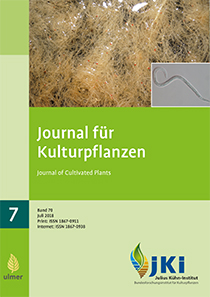On the state of implementation of the provisions in the National Action Plan for the Sustainable Use of Plant Protection Products in the field of Minor Uses
Keywords:
National Action Plan Plant Protection, Bund-Länder Working Group Minor Uses, registration of plant protection products, minor uses, speciality cropsAbstract
In the National Action Plan for the Sustainable Use of Plant Protection Products (NAP), the following goal was formulated by the Federal Government for the area of minor uses/speciality crops and for storage protection to improve the availability of pesticides: “in 80% of all relevant uses at least 3 groups of active substances are available by 2023”. Within the scope of the German Bund-Länder Working Group on Minor Uses, the associated Sub-Working Groups Minor Uses (UAG) and the Julius Kühn-Institute (JKI) conducted an analysis of the current status in all crop sectors in 2017. For this purpose, a total of 194 relevant uses were designated by the UAG, for which the JKI identified 1,058 different authorisations at a key date, the 3rd of October 2016. These approvals were grouped according to their suitability for the selected uses regarding crop, pest and application conditions. Subsequently, based on their technical expertise, the UAG assessed whether or not the “gaps are closed” with the approved registrations and the classes of active substances they contain. The result proves that the target ratio of the NAP “at least 3 active ingredient groups available” is currently not achieved in any crop sector.
DOI: 10.1399/JfK.2018.07.02, https://doi.org/10.1399/JfK.2018.07.02








